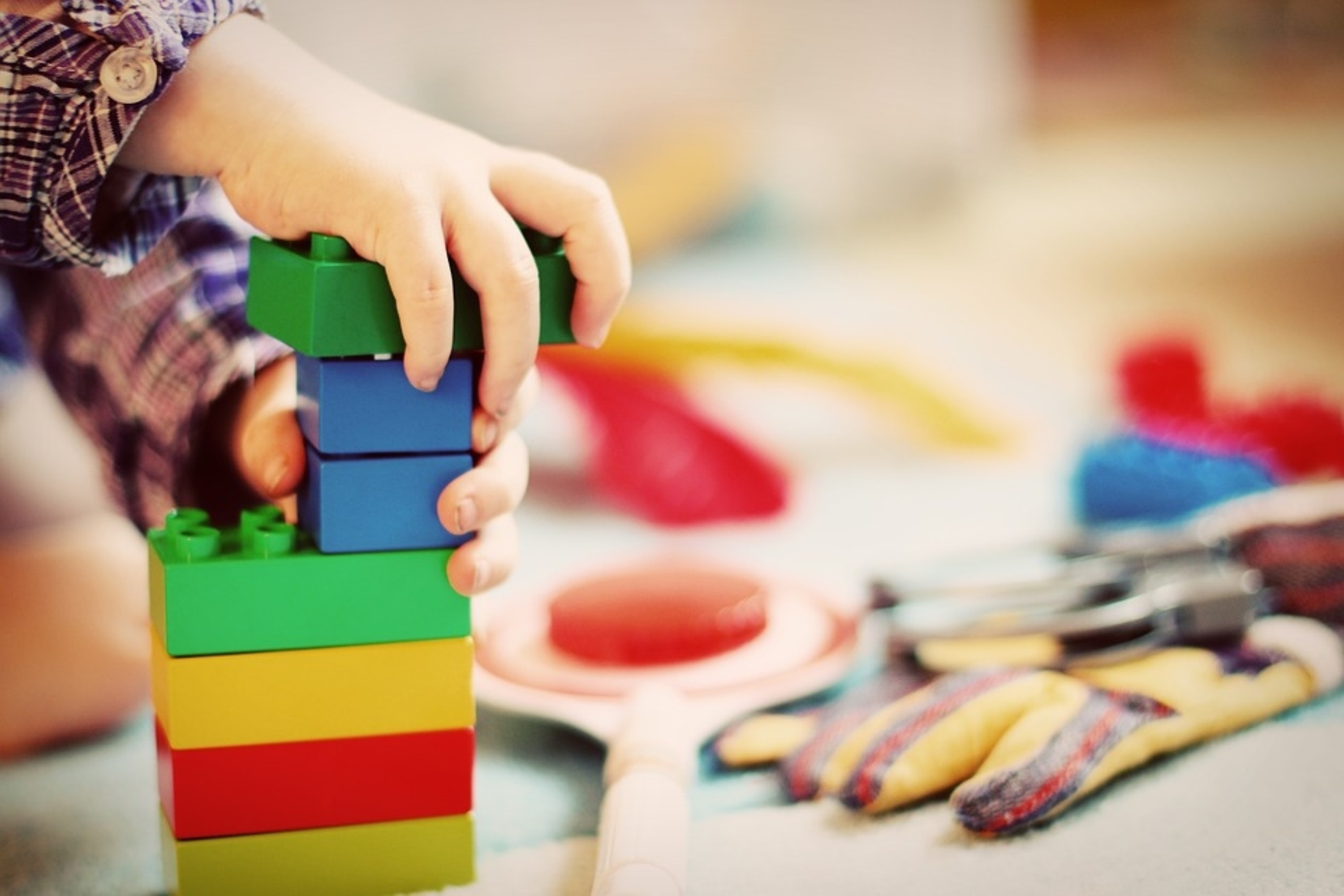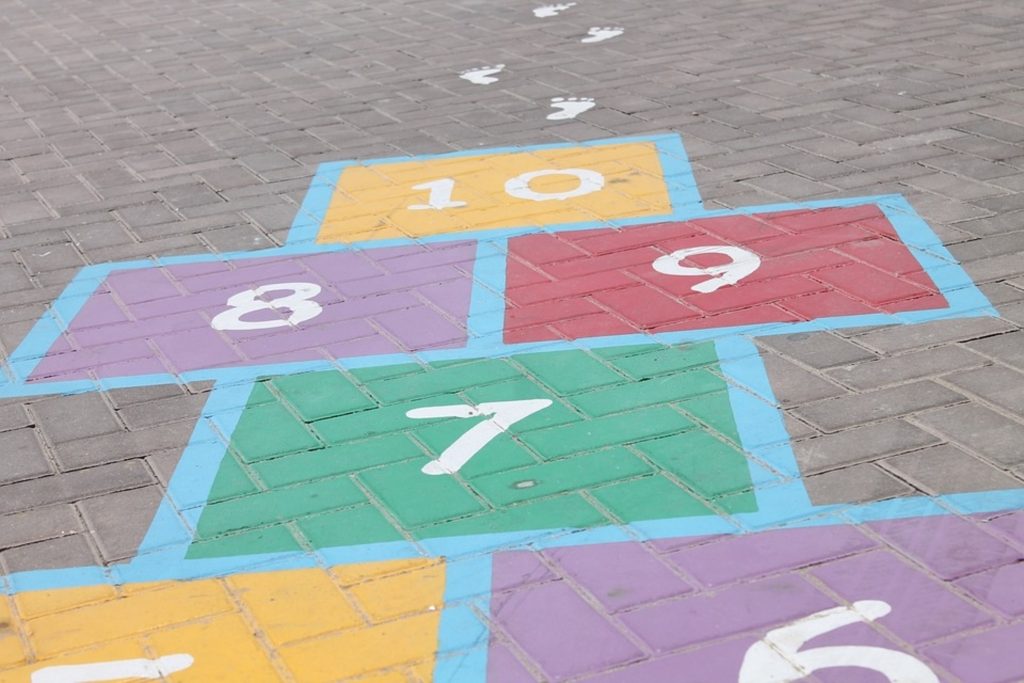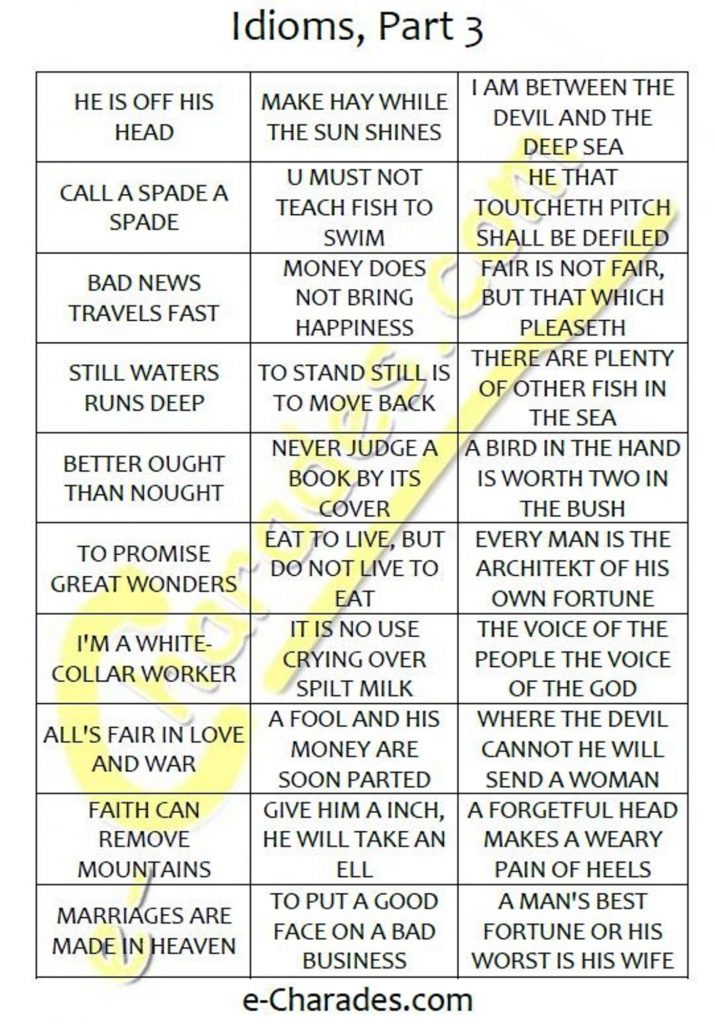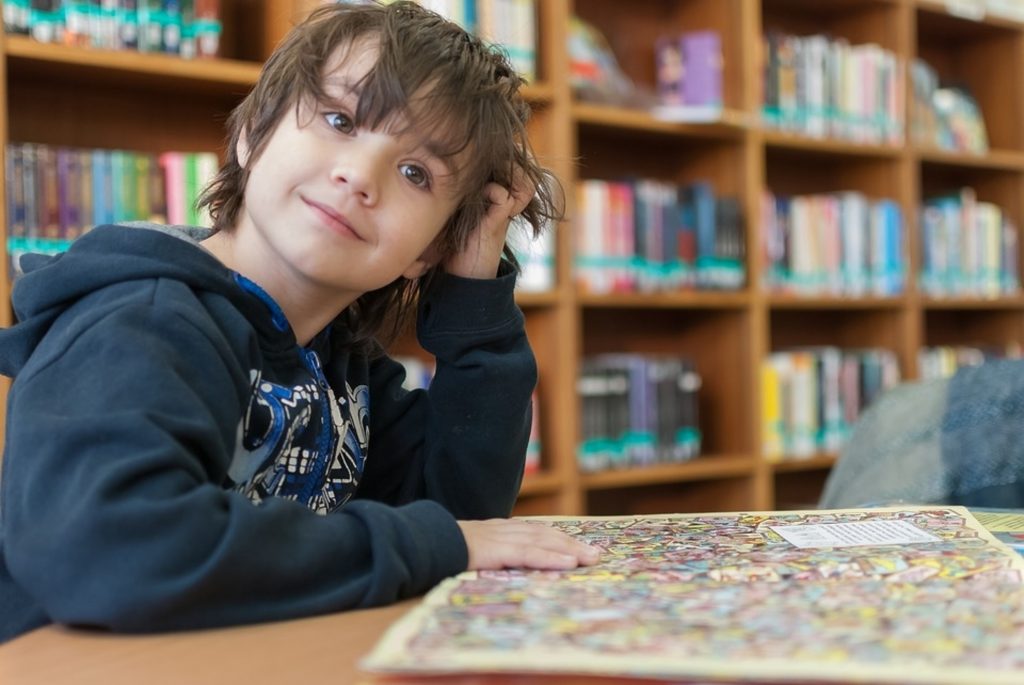
Learning games for elementary students can increase their understanding and retention of material, and it can also help them to engage with lessons and have fun while they learn.
Hopscotch
The classic game of hopscotch is a very adaptable game that you can use to teach children material in many subjects. If you have very young students, perhaps in Kindergarten, you may need to reinforce counting skills. So, you can number the squares in sequential order, as is traditionally done, and have students count up to the number on the squares. You can also use higher numbers, such as 10-20, or have students count by 10s up to the amount their marker lands on.
Or you could put numbers that are answers to multiplication problems in the squares for students in third grade, and when the students’ marker lands in a particular square, they should say the multiplication problem that goes with the answer. You could also put down questions students need to know for a quiz and have them answer the questions their markers land on before they hop to it.

Charades
Charades is another timeless game that can be adapted to the classroom. For example, if your students read a text, they can play charades as a class to act out important parts of the story. As students guess what part of the story each student acts out, a student or the teacher can write a short description of the events on the board. Students could also write them on paper or whiteboards. Then they put numbers next to each event to denote event sequencing. There are many other ways students can use this activity, such as acting out the emotions that a character feels at a particular moment in the story.

Two Truths and a Lie
Have your students test each other’s understanding of particular math, science, reading, writing, or social studies concepts by splitting them into small groups to play two truths and a lie. One person in each group picks a particular aspect of a topic that the teacher wants to assess knowledge of and says two true and one false statement. The group then picks out which of the three statements is false, and then another student repeats the activity with different facts and a new lie.
Four Corners
Place one sign one each wall of the room, making sure to clear the desks or other obstacles under the sign. Signs should indicate material that students need to review. For instance, the teacher could put up posters with “sphere,” “cube,” cone,” “cylinder” on each of the four corners, and then students walk to stand under the right label for an object that the teacher calls out, such as “can.” Students can also call out the objects and lead the exercise. You can also use real objects of different shapes and hold them up for students to see.
Moving Vocabulary
From Arts Edge at the Kennedy Center, this activity helps students learn new vocabulary. Choose new verbs that students are learning and some that they know already, like “stumble,” “jump,” and “glide.” Put each word on index cards in a container. Put students in a circle, and have each select a card. Play music and students enter one by one to demonstrate their movement. Then break students into small groups and have them combine them into a dance. Students in each group figure out the order in which to do the dance and then perform their dance for the entire class. You can also have the whole group dance together as each student adds to the piece.

Rhythm and Memory
Also from the Arts Edge comes this activity: students can sit on the floor or at their desks. They use their feet, hands, or mouth to make a two-beat sound. The teacher starts the round by clapping twice, and then the person to the right makes a sound, like snapping a couple of times. They then repeat the sound the teacher made. The next person makes another two-beat sound and then repeats those that have gone before. You can limit how many sounds in a row students can make depending on their grade level. In the end, have students perform their sounds for the class.
